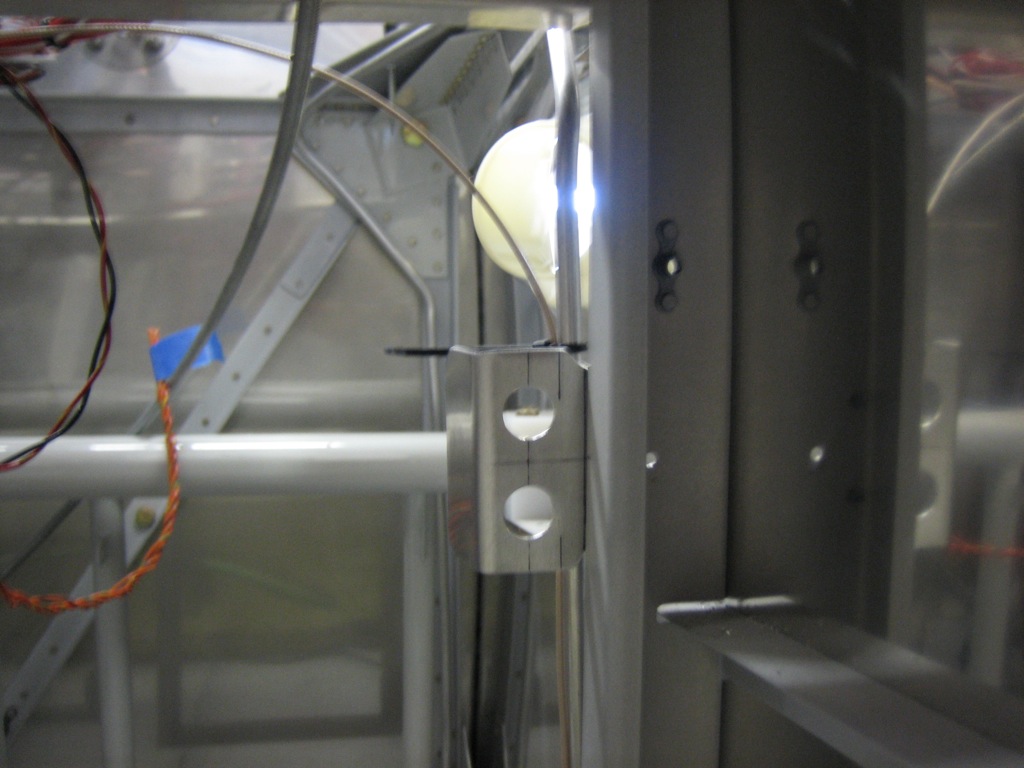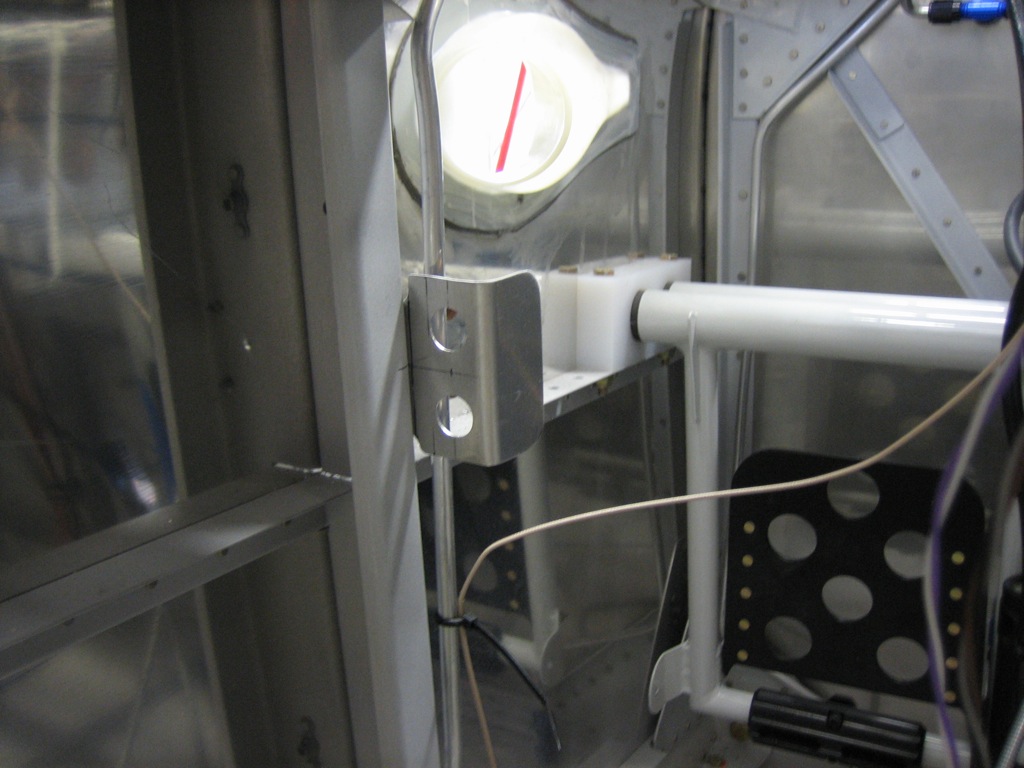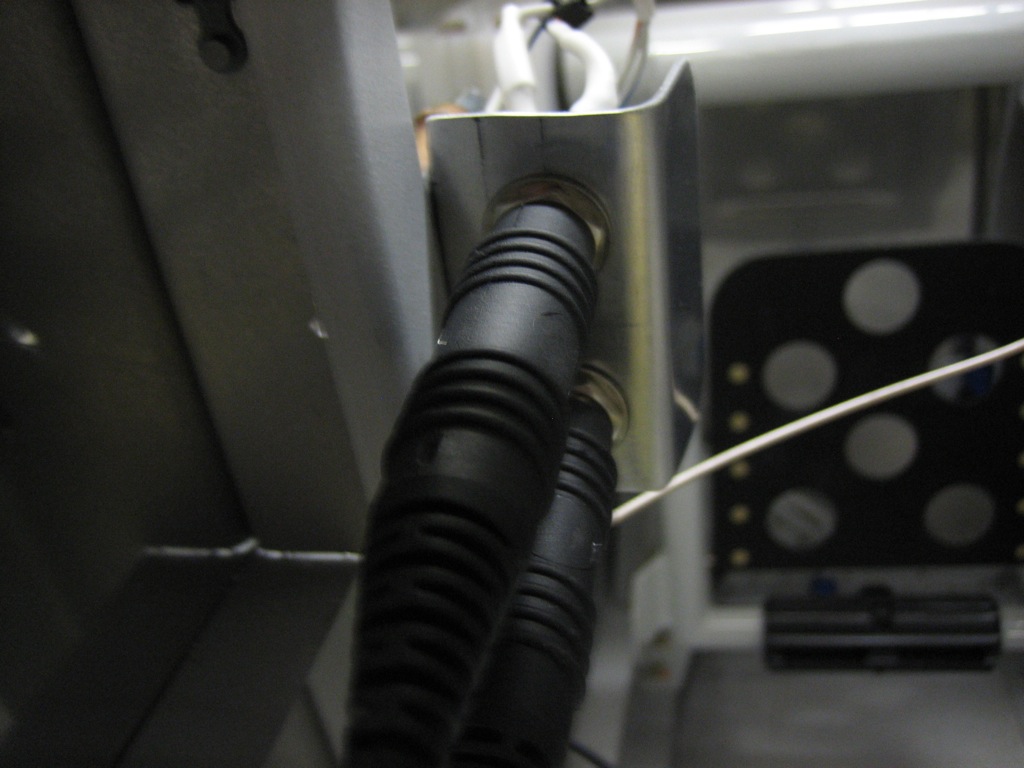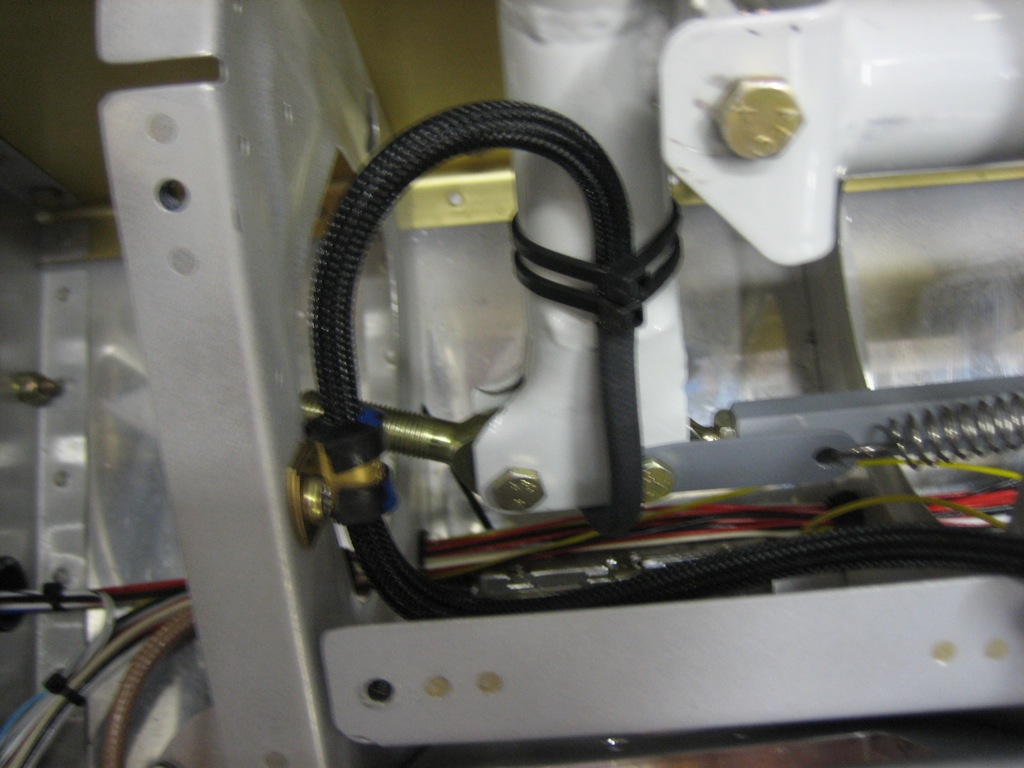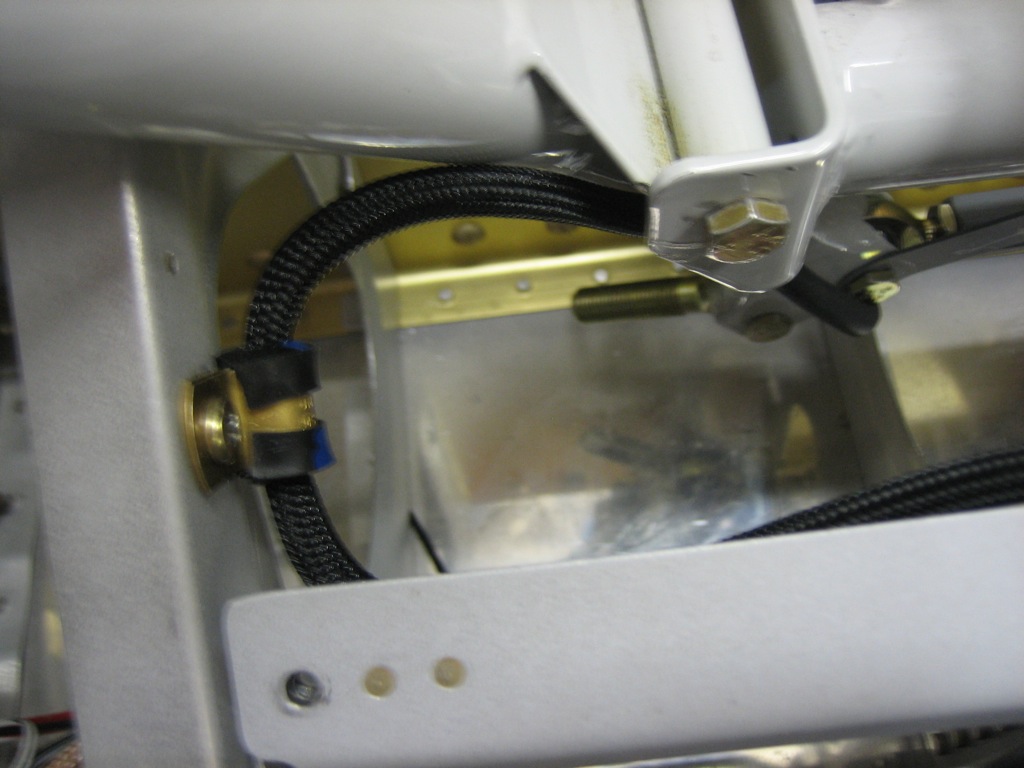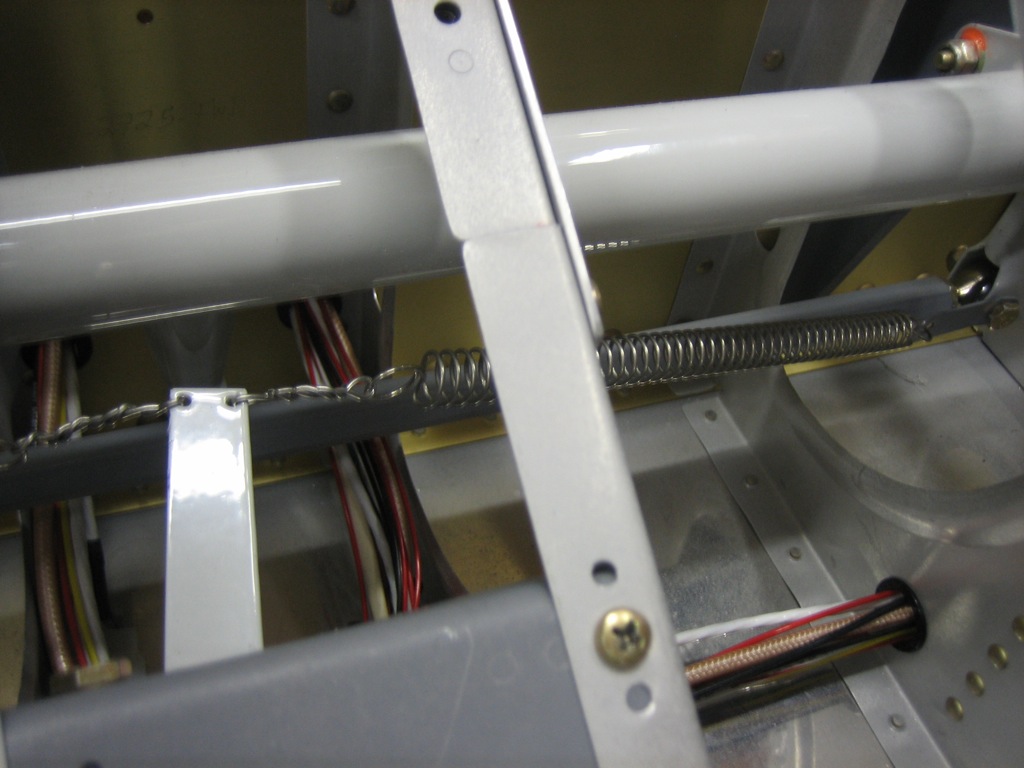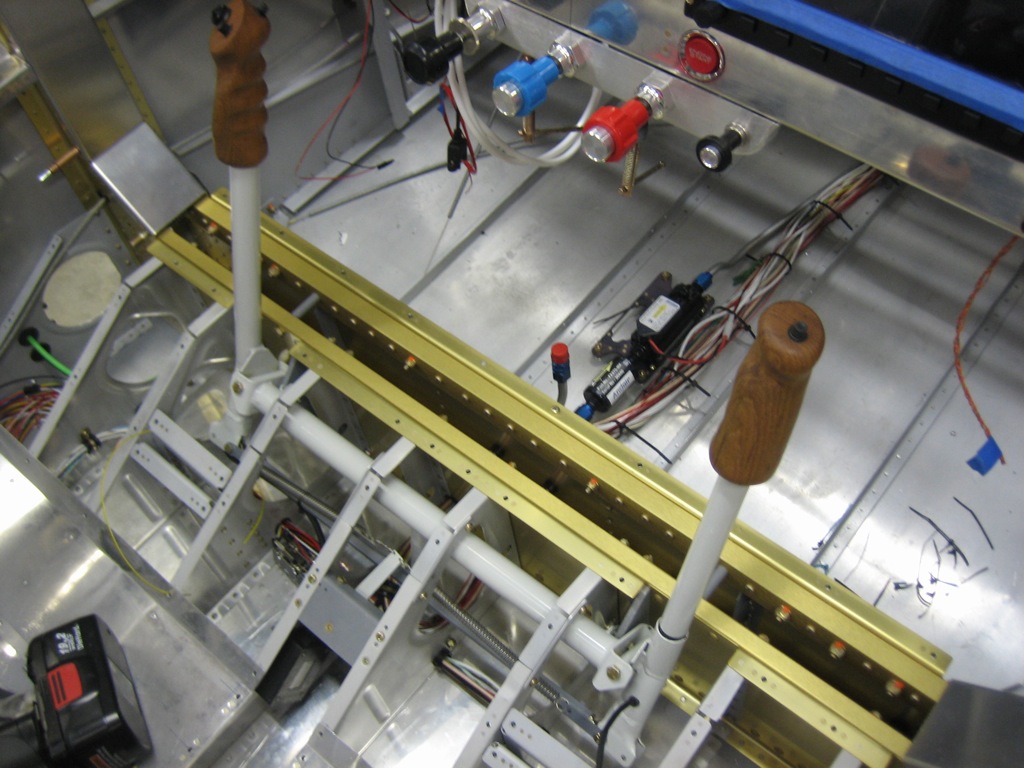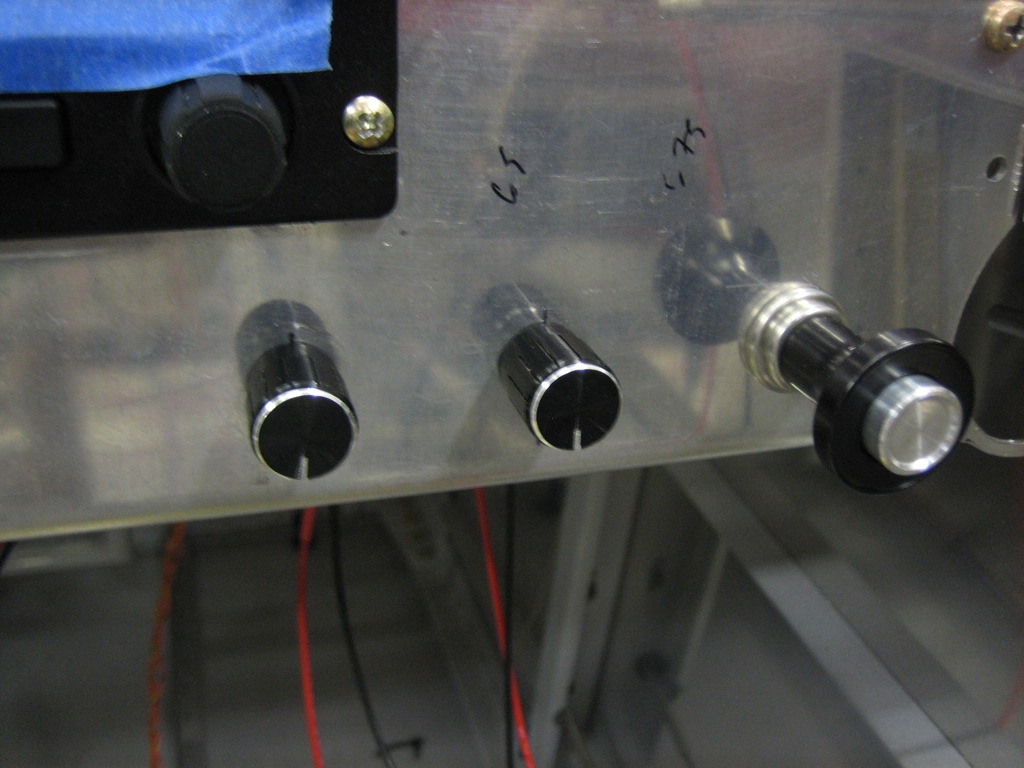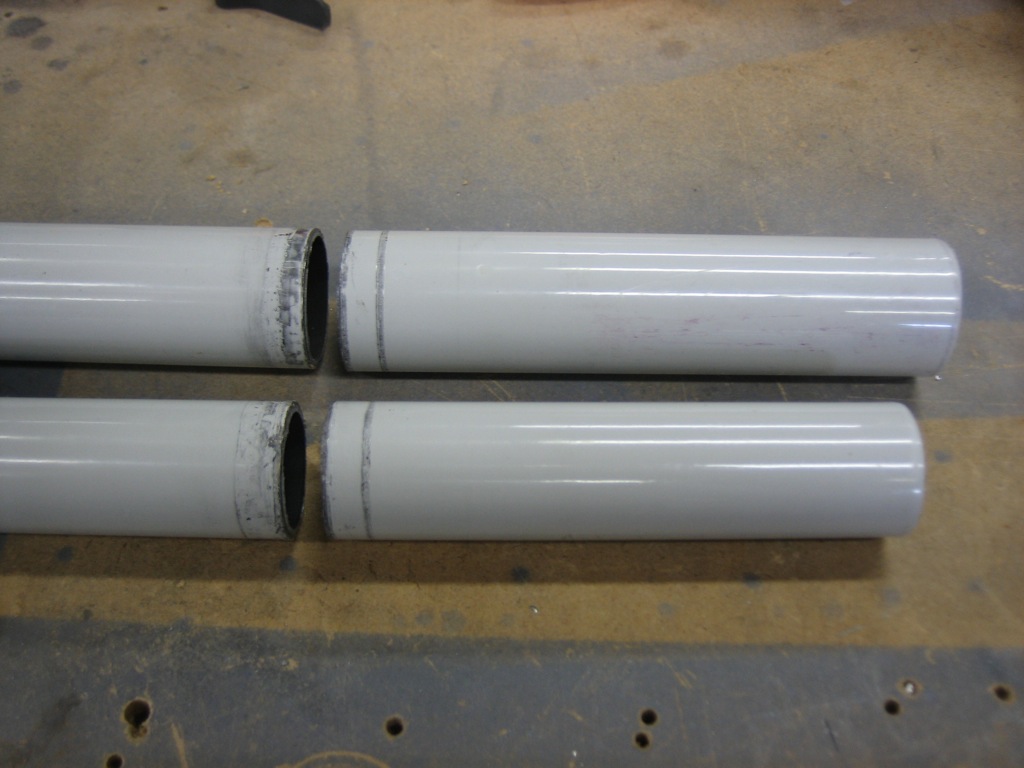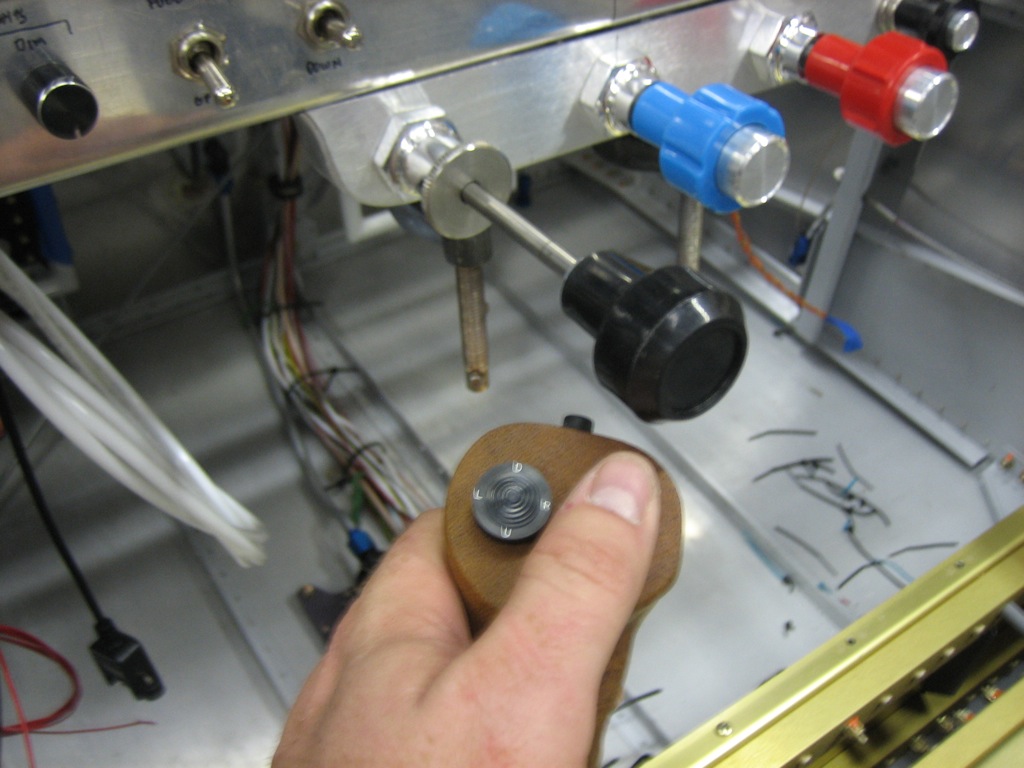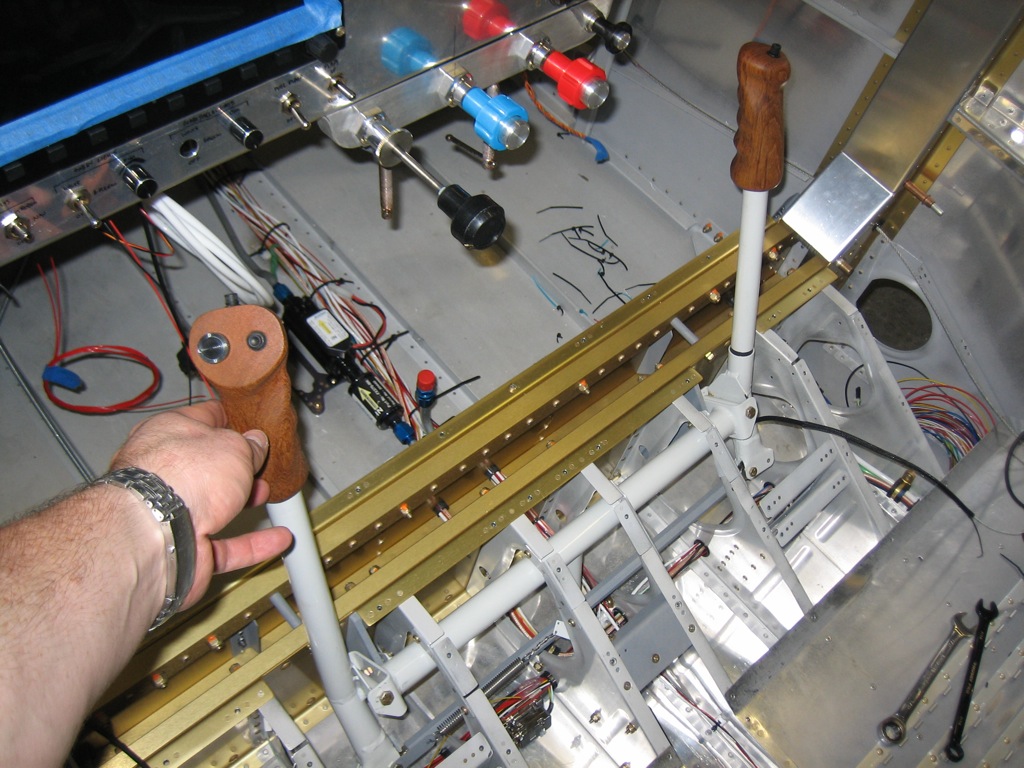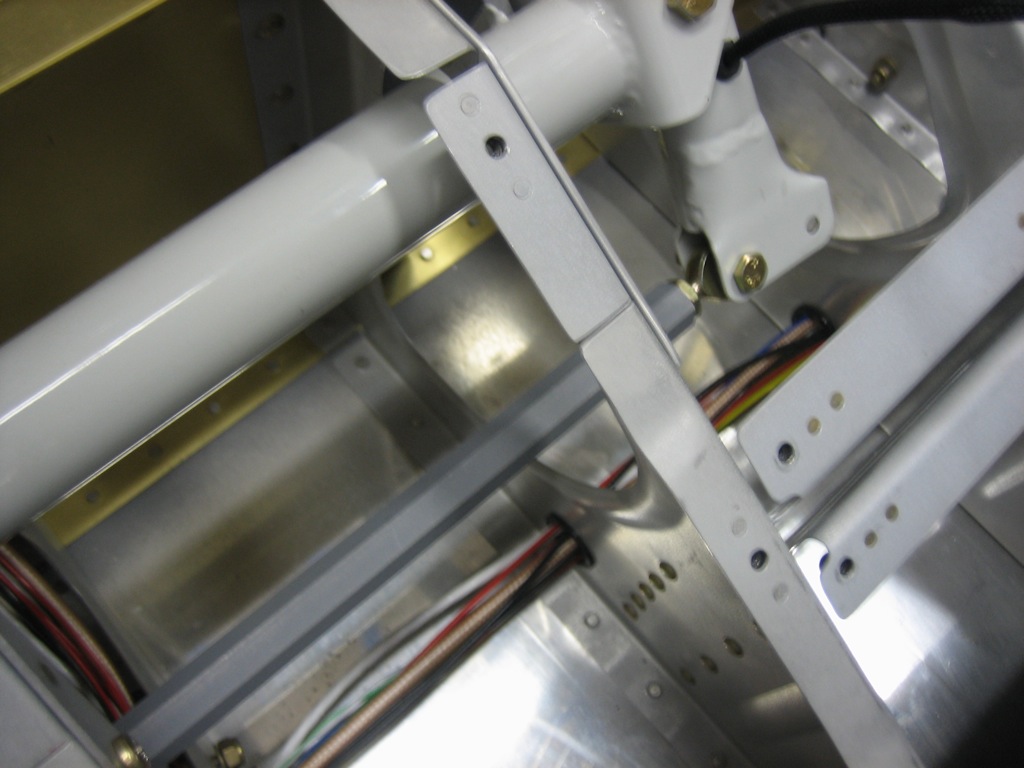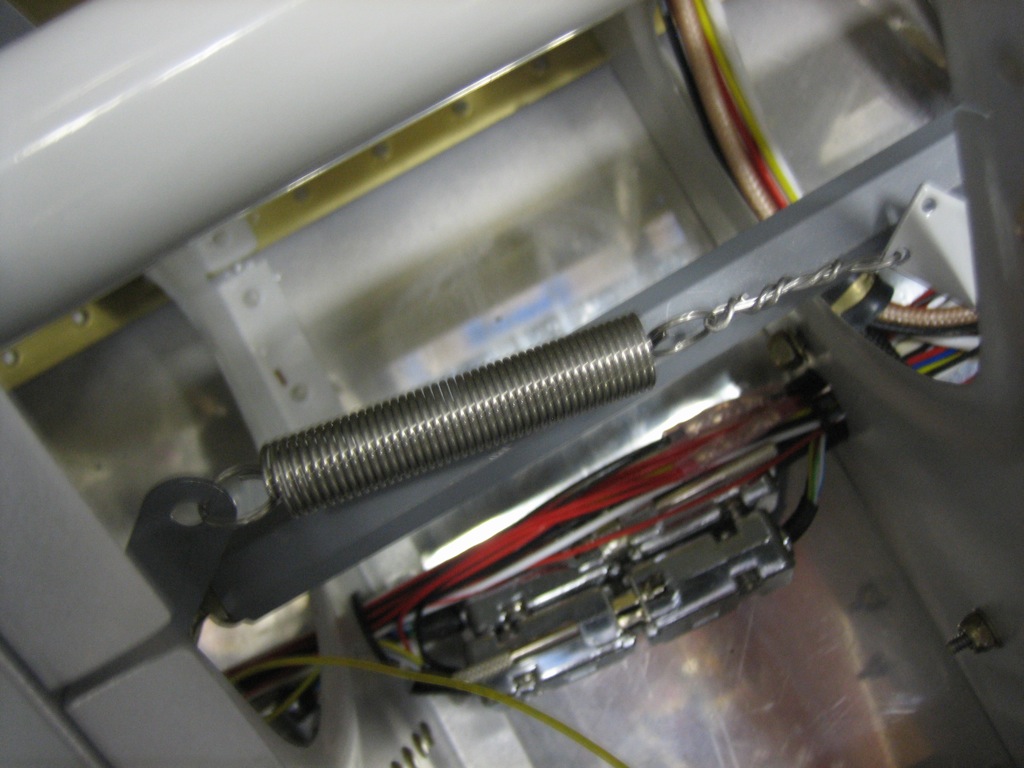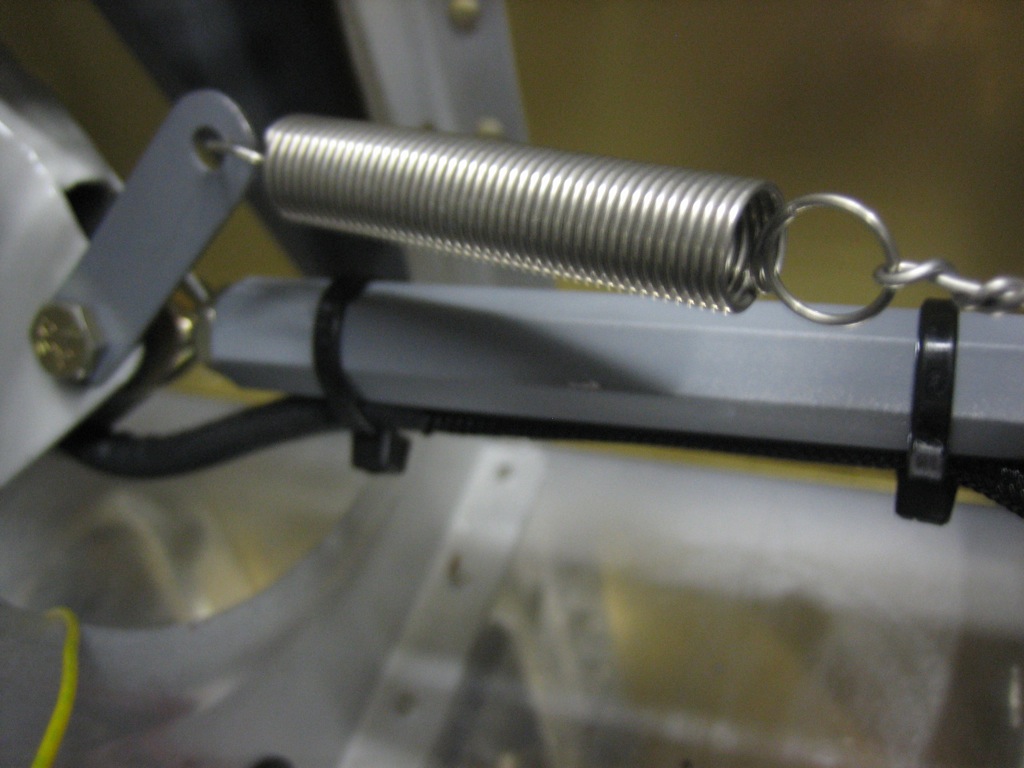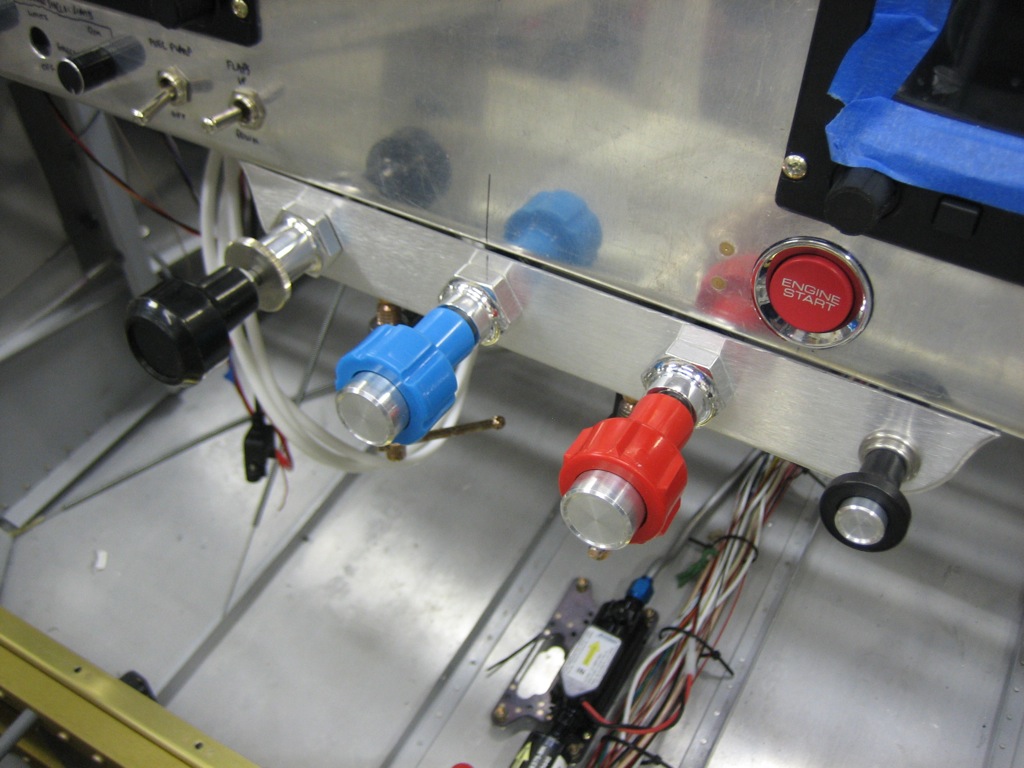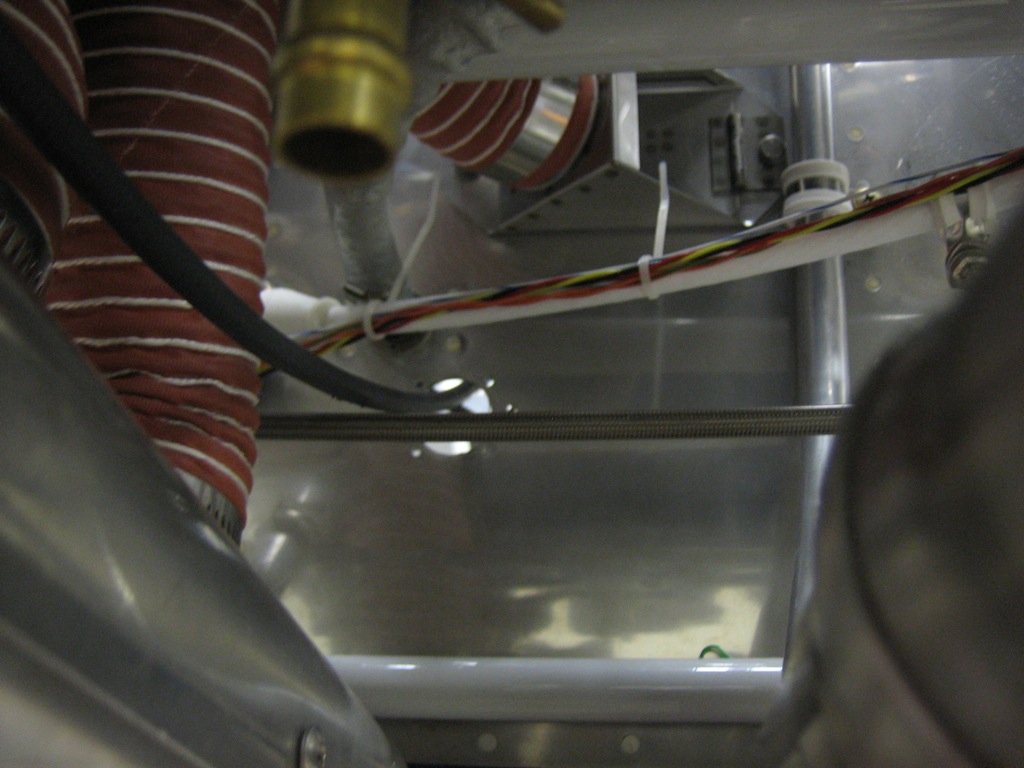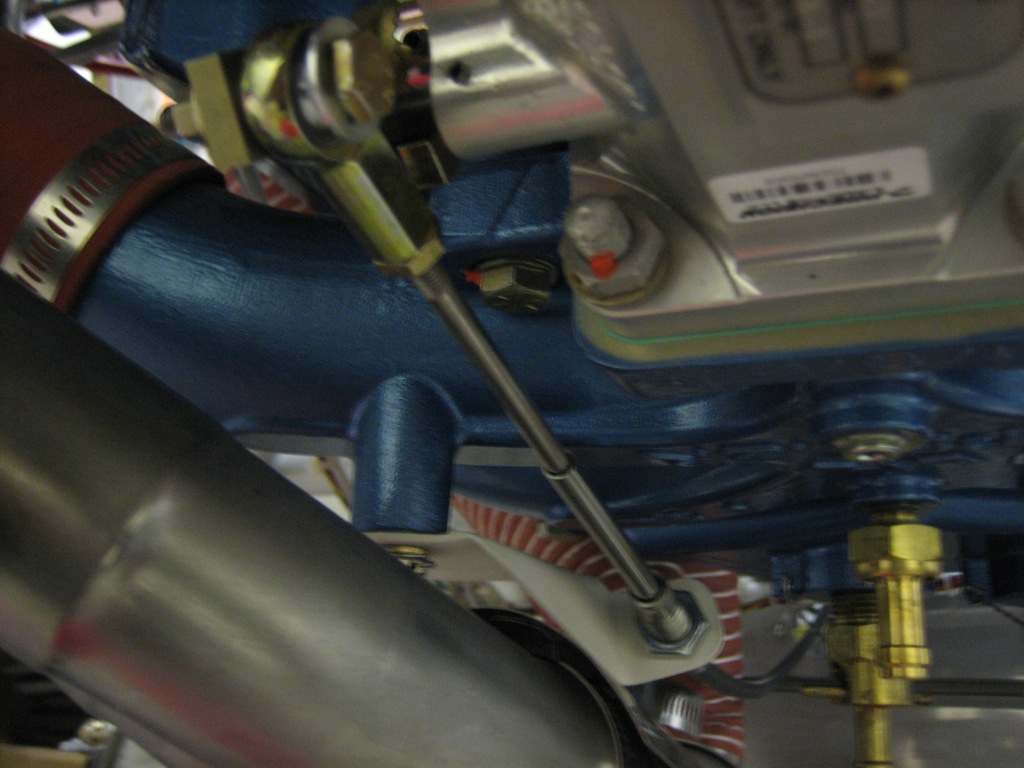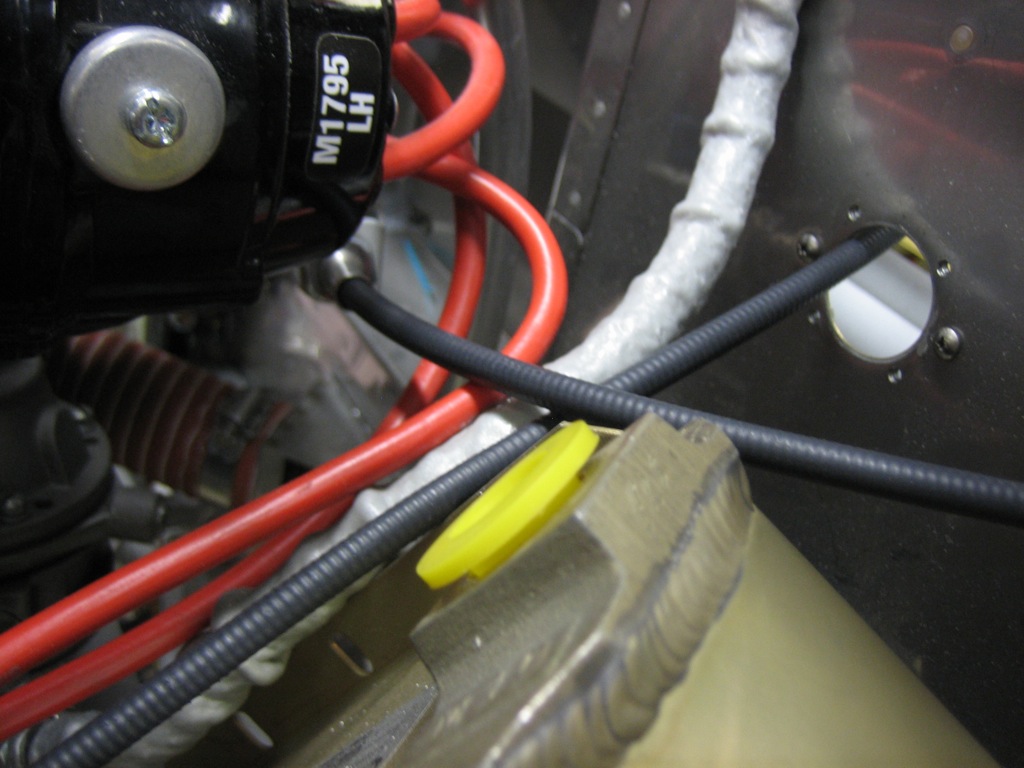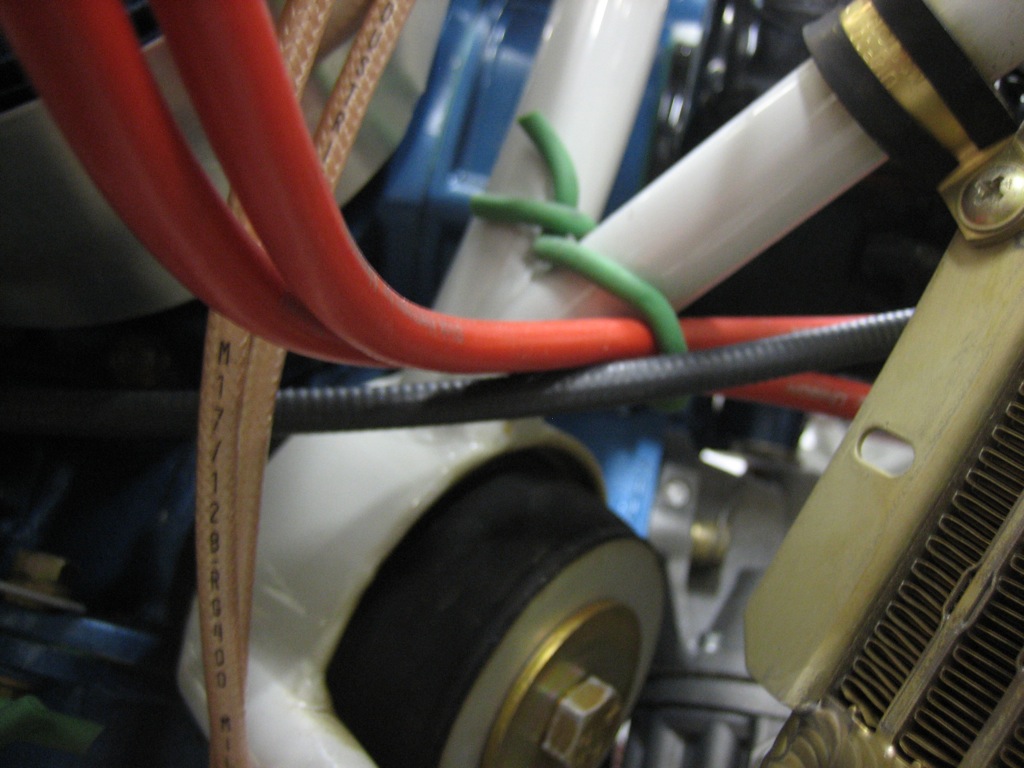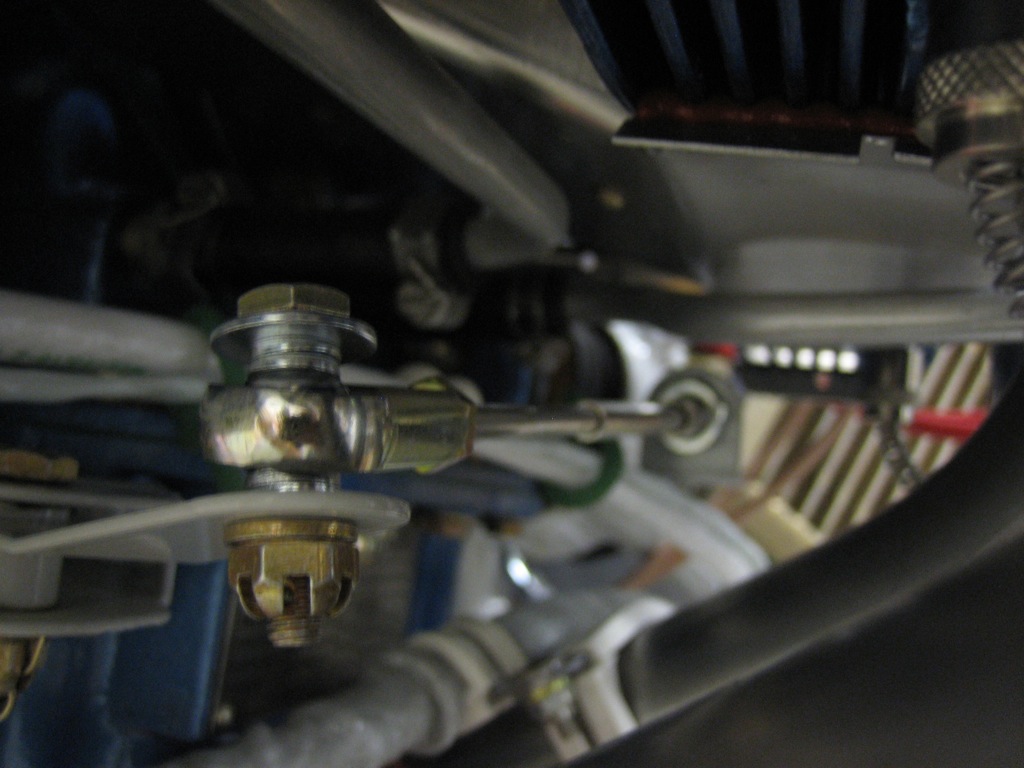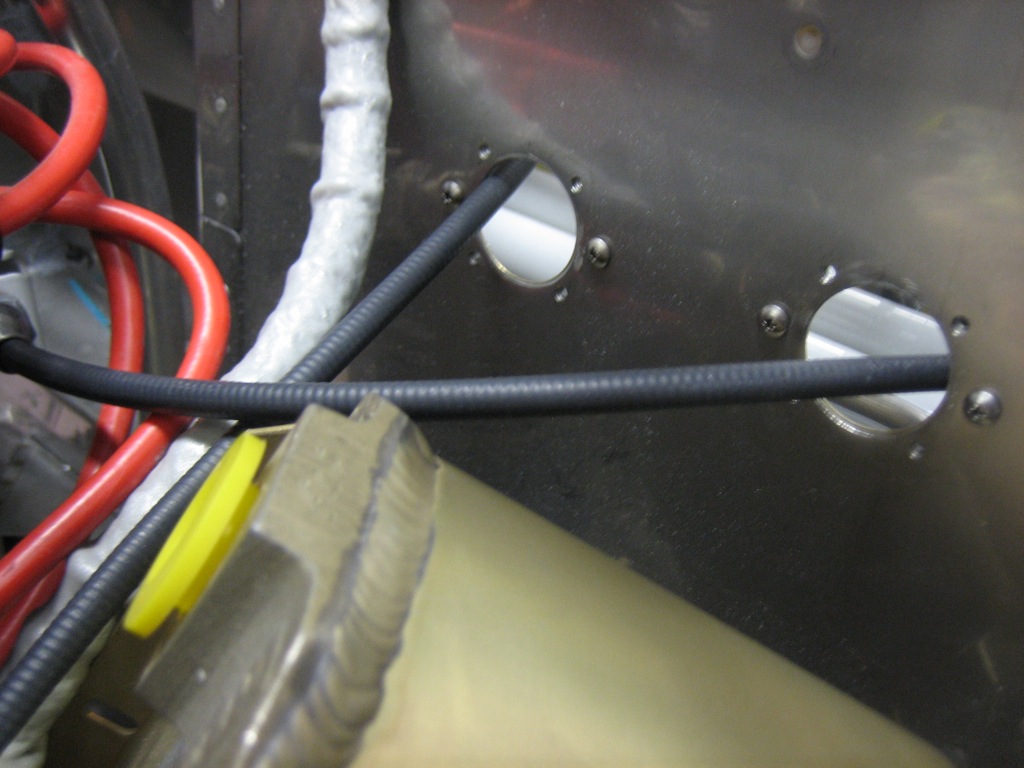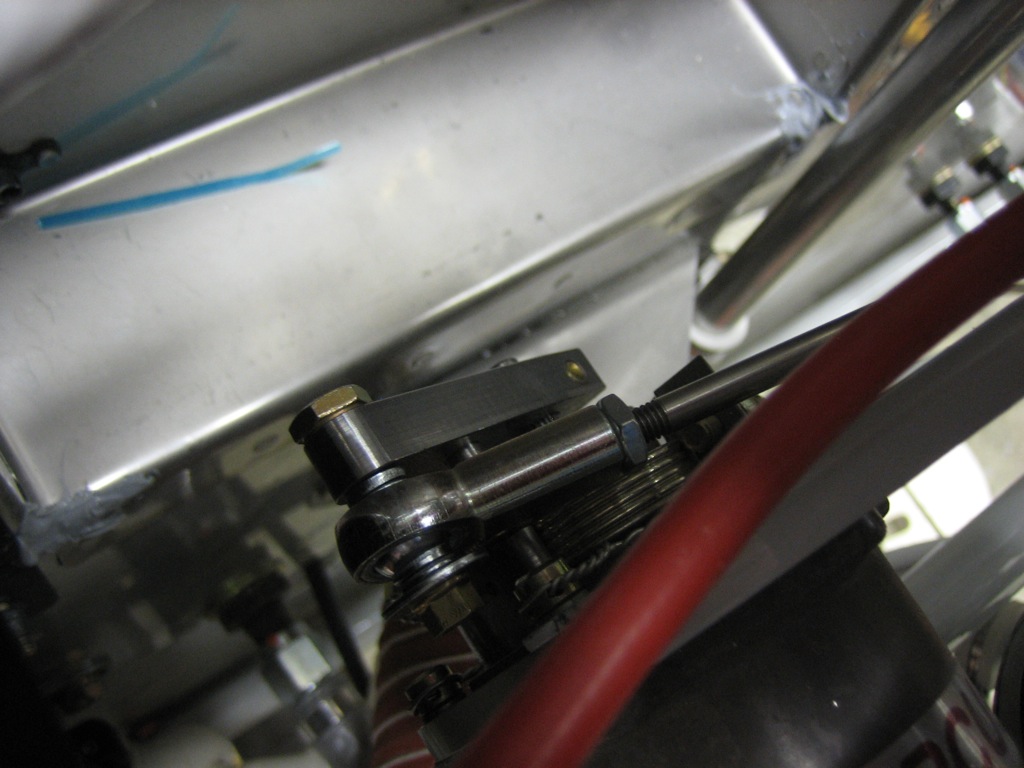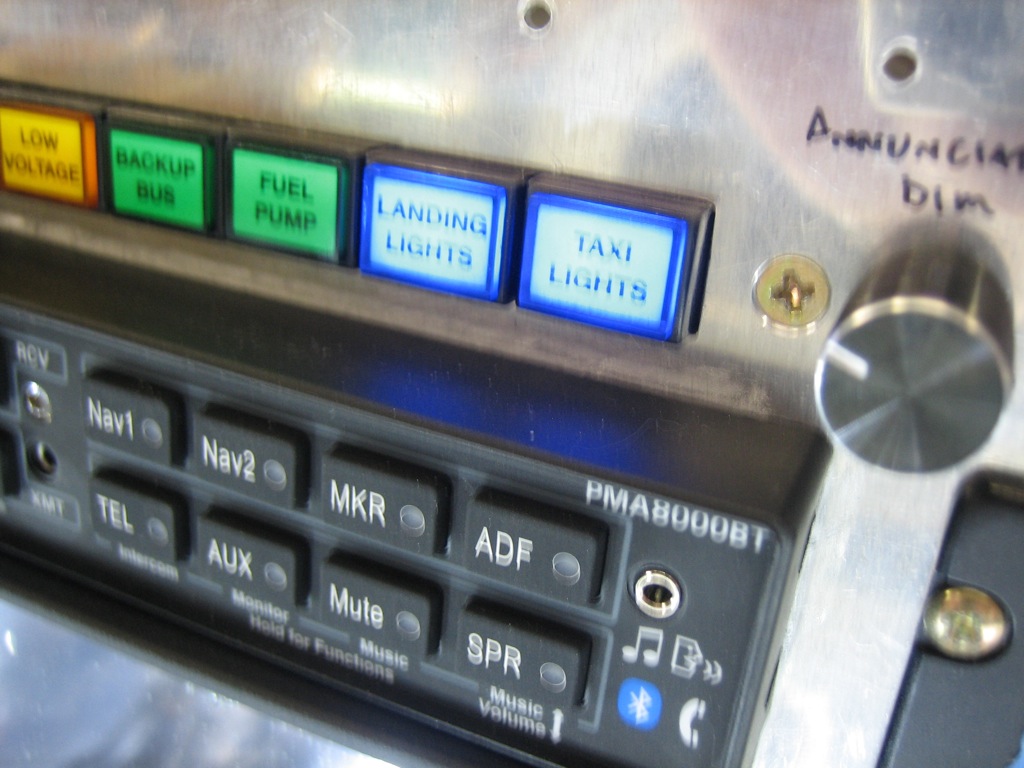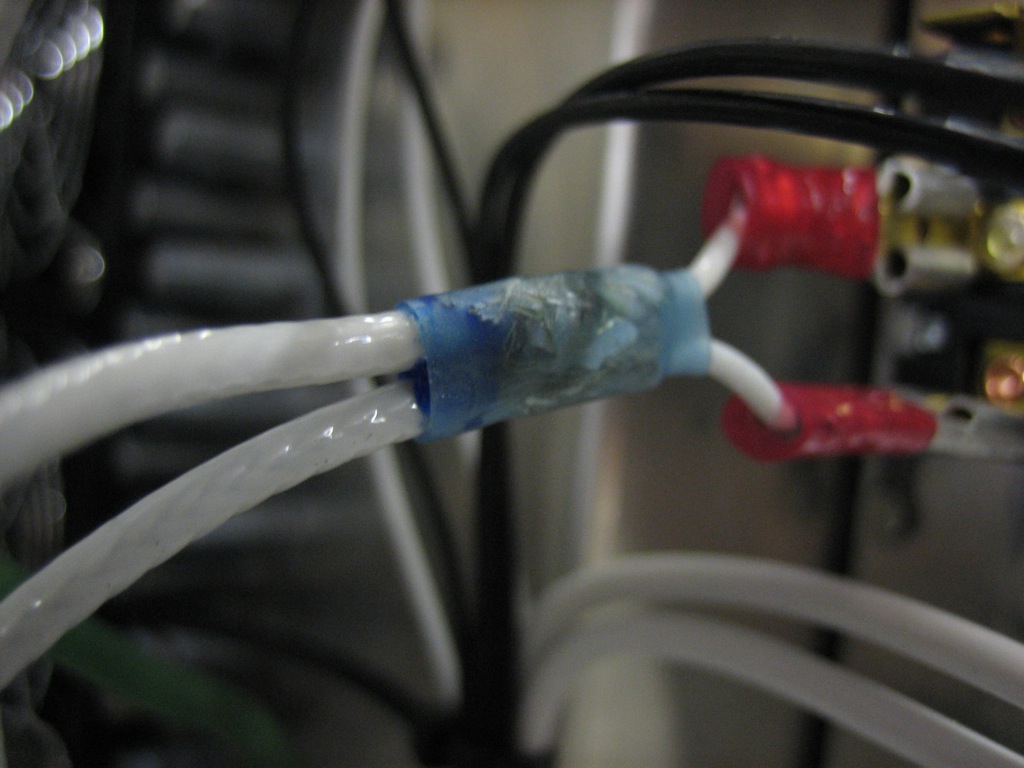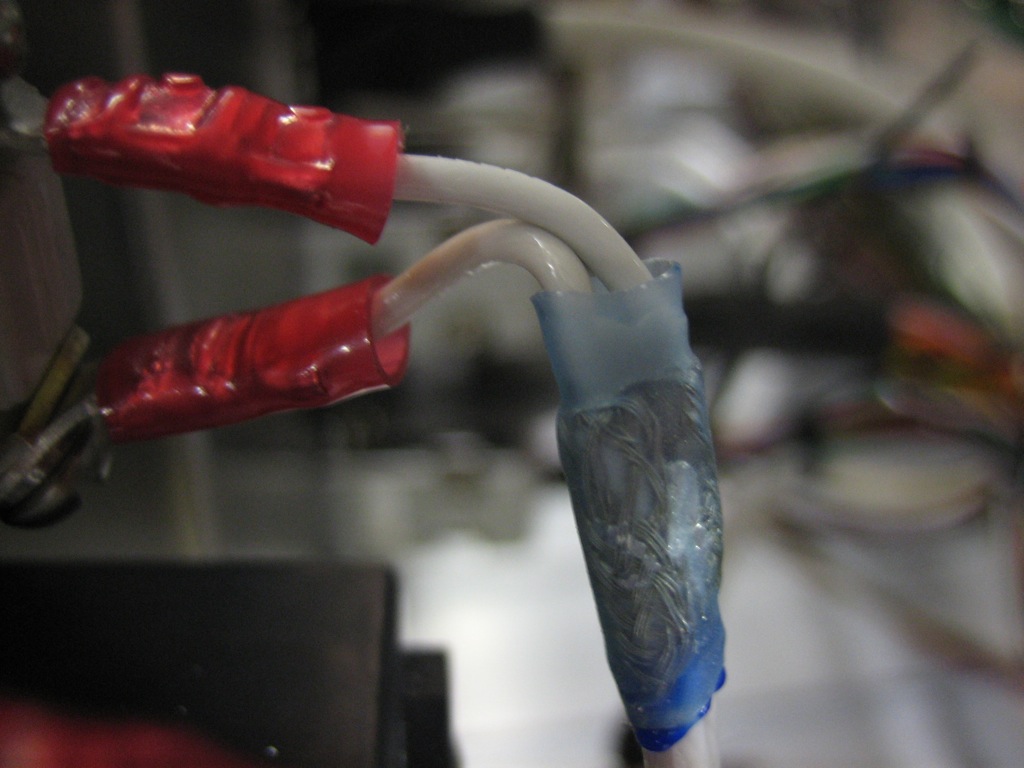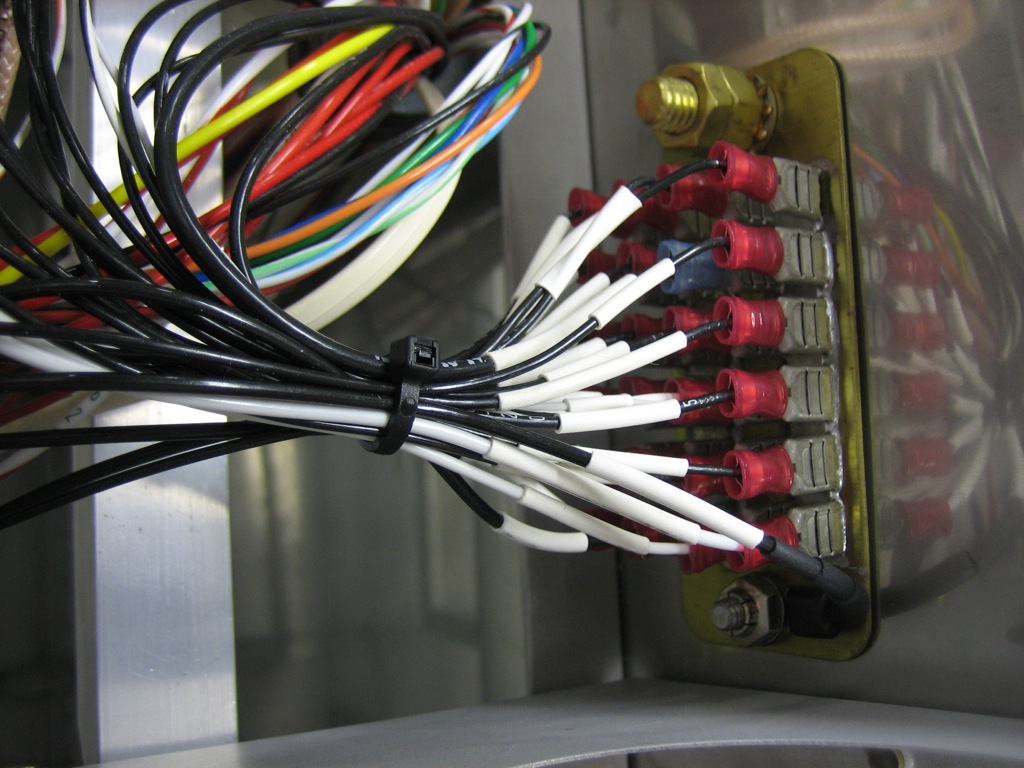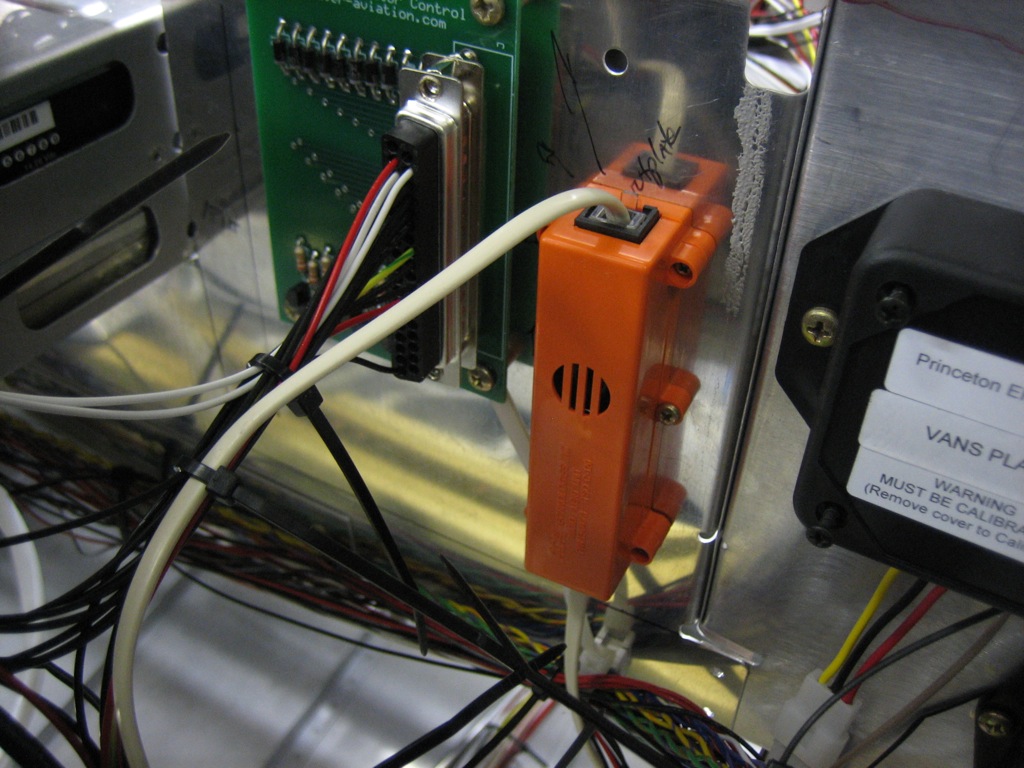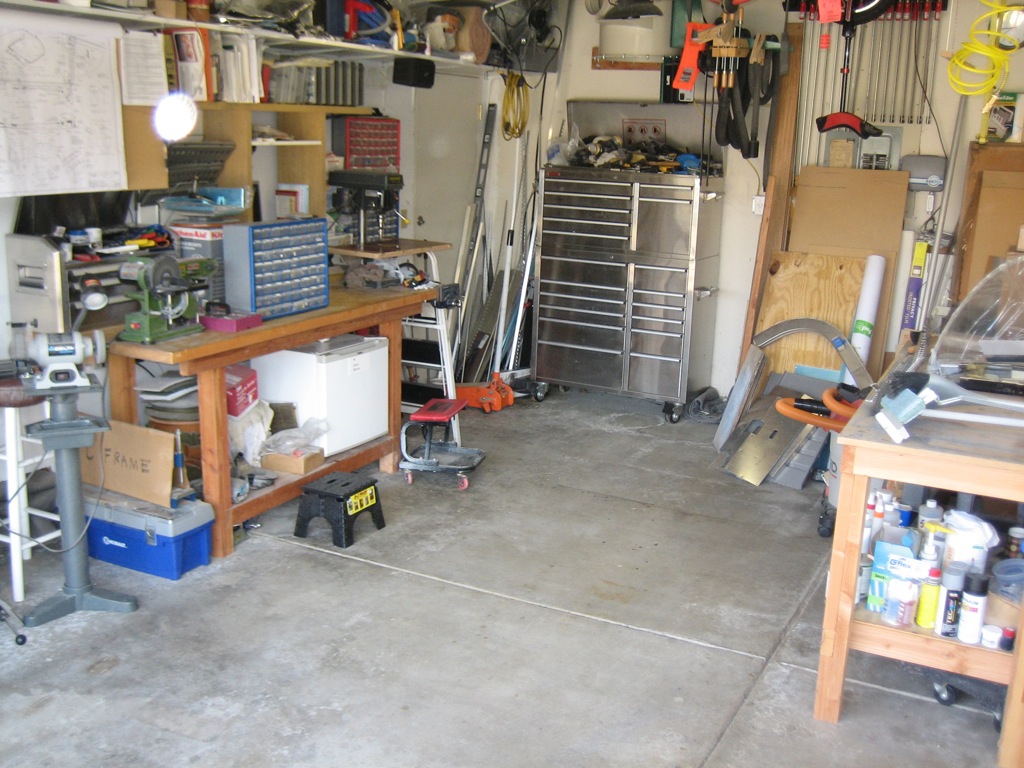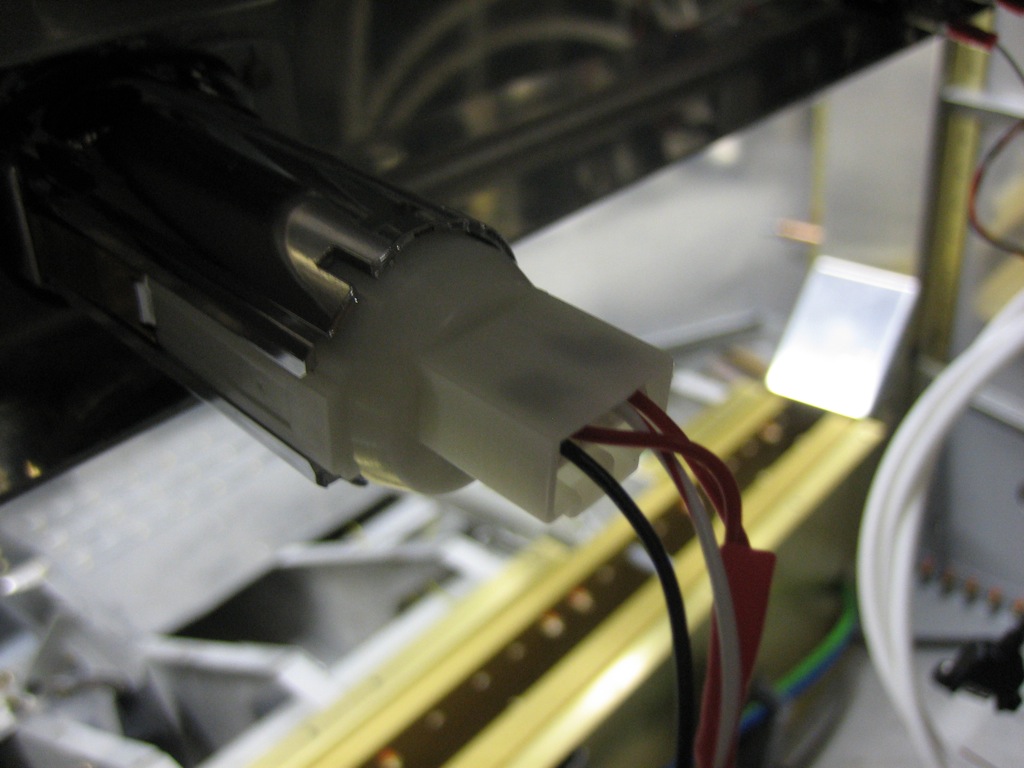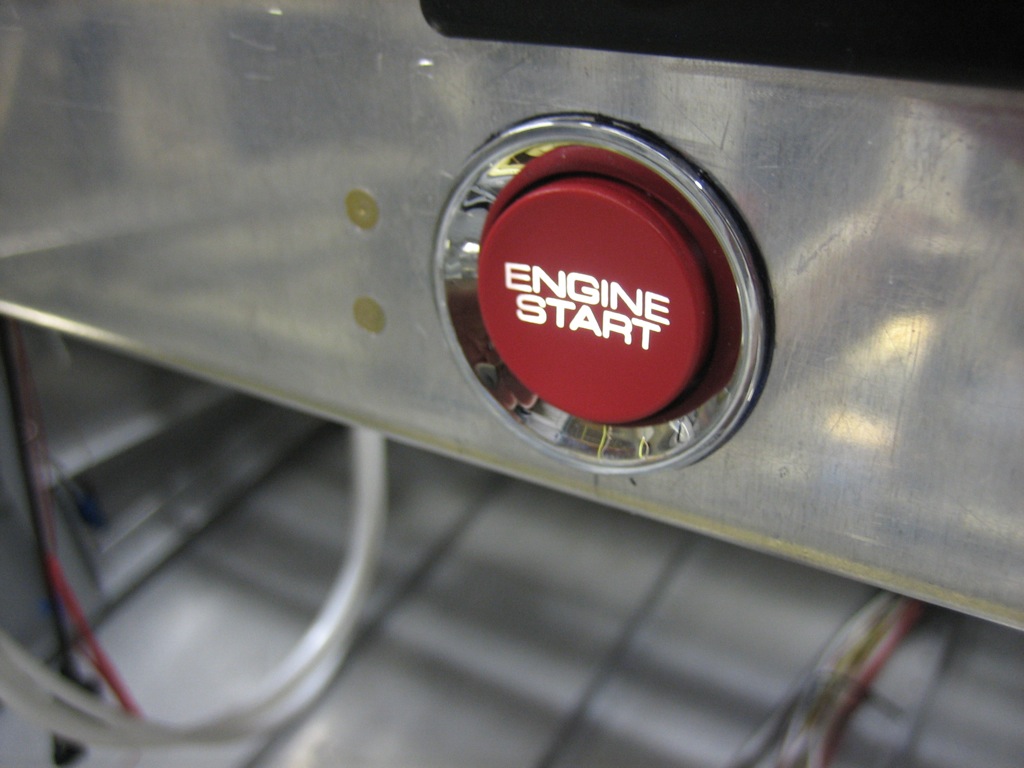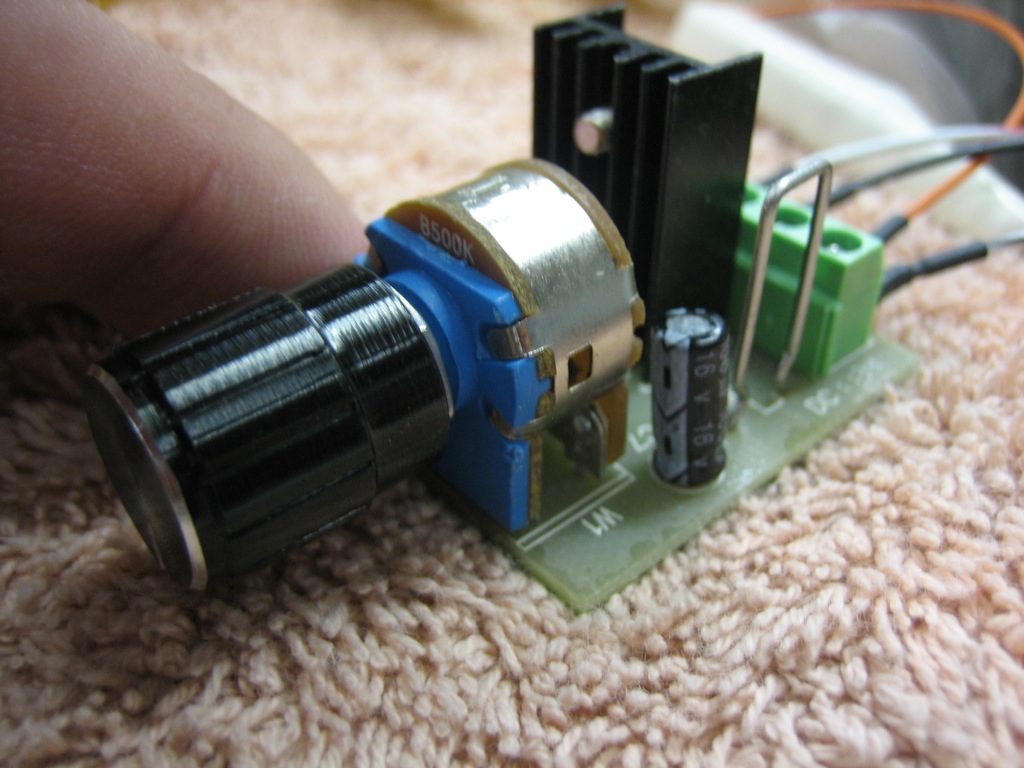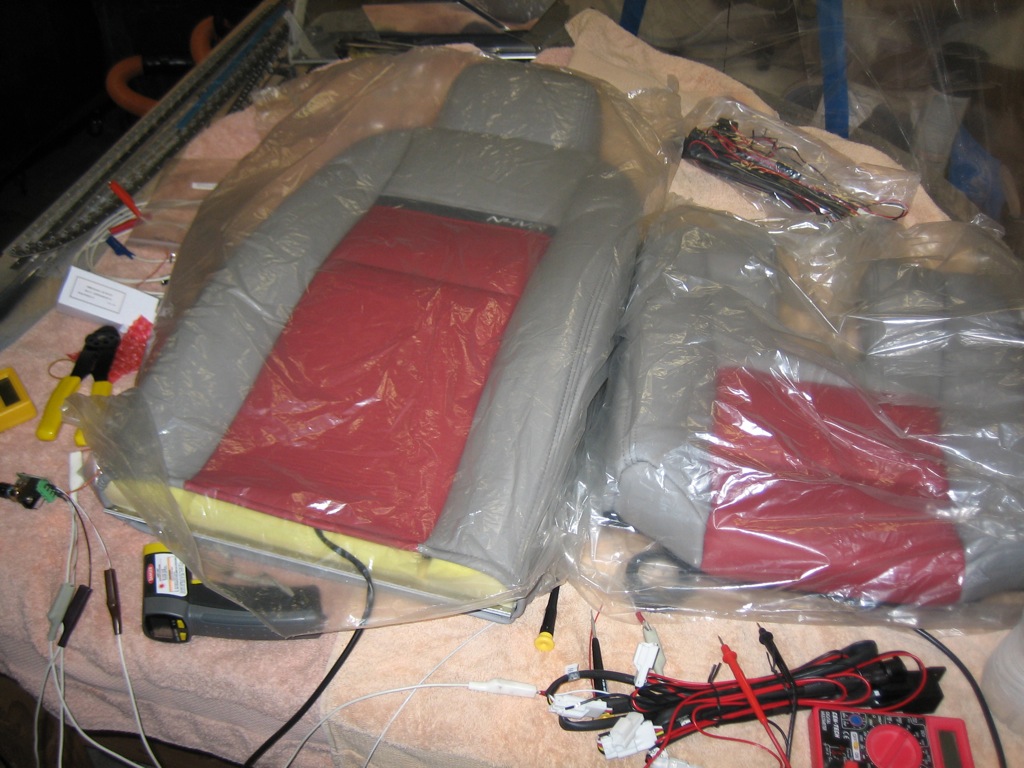I finished wiring up the pilot’s stick grip tonight. The bundle from the stick terminates at the connector on the left so that the stick can be removed without having to disassemble any of the wiring.

In the next bay to the right, the ground wires split off and are grounded to the rib with a #8 screw since these are just ground sense wires. I cleaned off the primer and used some Noalox anti-oxidant compound to ensure a good ground. The yellow wires from the autopilot servos are tied together here and connected to ground through a 5kΩ resistor which allows the SkyView system to detect a broken autopilot disconnect wire. They can also be shorted directly to ground through the CWS button on the stick which triggers the CWS and autopilot disconnect functionality. Six of the wires (four trim wires and PTT wires) proceed from here up behind the subpanel.
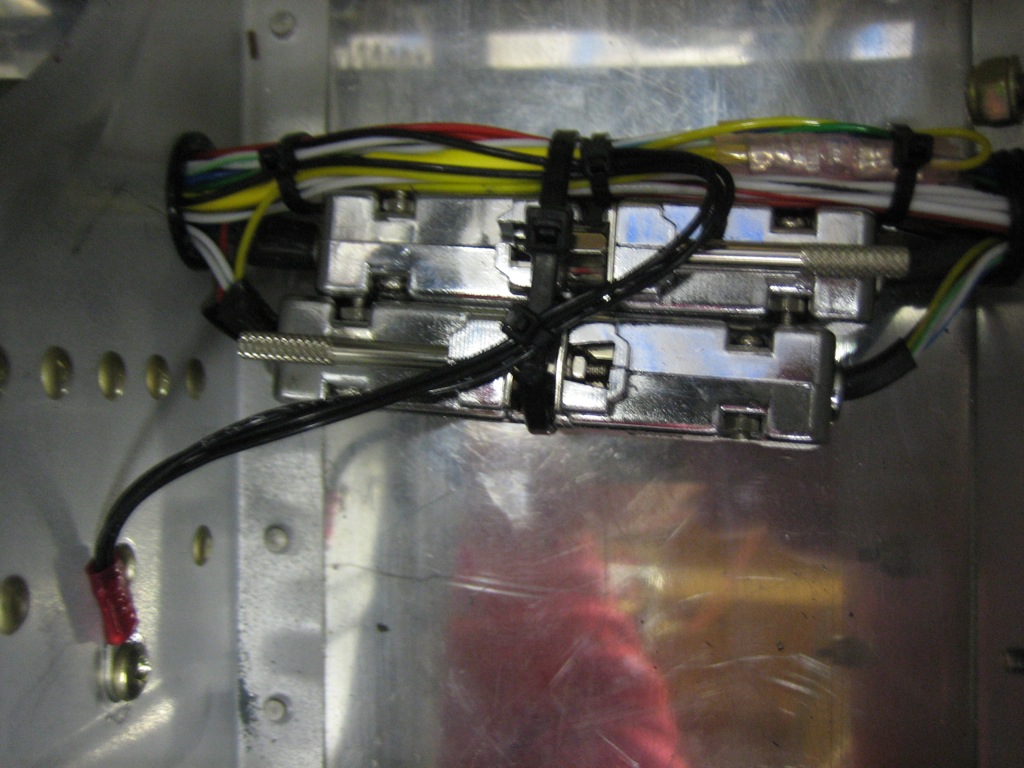
With the final four connections made on the J2 connector, I installed the connector shells on J1 and J2. Finally, I fired up the avionics and verified that I can transmit on the radio, control the autopilot, and drive the trim. I did notice one oddity though. When I first tried running the trim with the coolie hat, the aileron trim ran backward from the way it should have. I hooked up the laptop and double checked that the coolie hat was wired up correctly and it was. Reversing the motor addressed this problem, but created another. When I go to the VP-X page on the SkyView and scroll to the roll trim device, the Left and Right buttons at the bottom of the screen now are reversed. I also configured the trim widget on the engine control page and noticed another oddity, when I trim all the way to the right, the arrow moves all the way to the left. Looks like it’s time to contact Dynon again.


